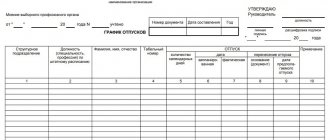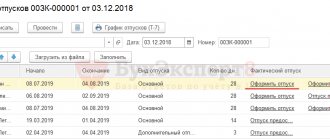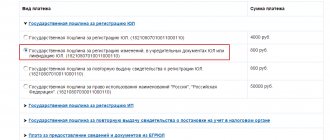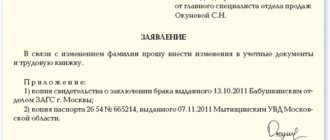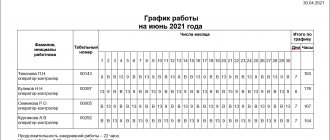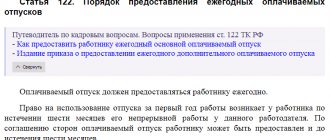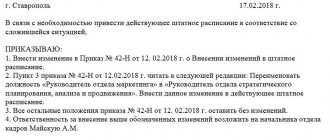In accordance with the requirements of Article 123 of the Labor Code , each employer must draw up a vacation schedule annually. The document includes information about the vacation periods of all employees with whom employment contracts have been concluded. The schedule is binding on both the employee and the employer. It is in accordance with this that employees go on annual paid leave.
The document must be ready at least 2 weeks before the end of the previous year .
Document meaning
The schedule helps solve several problems :
- Plan vacation periods for the next year so that there are no overlaps. For example, so that all specialists performing the same functions do not go on vacation at the same time.
- Take care in advance of replacing the employee during the vacation period or transfer his functions to colleagues.
- Fulfill the requirements of labor legislation: notify the employee in a timely manner about the upcoming vacation and pay vacation pay.
- Keep under control the issue of compliance with vacation dates, as well as the number of unused days.
Why issue an order?
All orders issued at enterprises are administrative acts.
Their goal is to legitimize certain actions of the administration.
An order to adjust the vacation schedule provides the right to change employee rest periods without causing negative consequences, that is, on completely legal grounds.
Do not forget that for violation of labor laws, including for non-compliance with the schedule, the director of the company can be fined 5 thousand rubles, and the company 50.
Unified form T-7: is it necessary to use it?
For the vacation schedule, a unified form T-7 , approved by Decree of the State Statistics Committee of January 5, 2004 No. 1. However, employers are not required to use it unchanged. Based on the resolution of the State Committee of the Russian Federation on Statistics dated March 24, 1999 No. 20, the form can be modified. You can also develop your own template, approve it and use it as a vacation schedule.
In practice, employers most often use a unified form, although the table is often supplemented with the necessary columns.
Form T-7
The following image shows what the unified vacation schedule form (T-7) looks like:
How to create an order?
Considering that there is no approved standard form for an order to adjust the vacation schedule, such an administrative document can be drawn up in any style, on a simple sheet of A4 paper or on the company’s letterhead.
When creating an order, you must display the following information:
1) At the top of the form is the full name of the enterprise. If the order is drawn up on letterhead, then such data is already displayed in it.
2) Below, in the center of the line, fill in the name of the document, assigning it a number and the date of its preparation.
3) The next line displays the purpose for creating the order.
4) Then fill in the introductory text, indicating the basis for creating the order (application, production necessity, illness, etc.), after which the word is written: “I order:”
5) The following items are displayed with the display:
- Dates of transfer of vacation to the employee, indicating full name. subordinate and number of vacation days.
- Adjustments to the timing of the vacation schedule for the specified employee.
- FULL NAME. the official entrusted with monitoring compliance with the order.
The form is completed with the signature of the director of the company and the signatures of the persons noted in the order, indicating that they have read the published document.
Vacation schedule: step-by-step instructions
Next, we will consider the step-by-step process of creating a vacation schedule in the T-7 form.
Step 1. Filling out form T-7
The form consists of a header and a table containing basic information. See below for how to fill it out. The active field is highlighted in color.
The header should include the following information:
- Organization name or full name entrepreneur. The name of the company must be indicated in full as it is written in the constituent documents. If the name in the charter is written in capital letters, it must also be written in the schedule.
- OKPO. Eight-digit code in accordance with the All-Russian Classifier of Enterprises and Organizations. You can take it from the information letter of the territorial division of Rosstat.
- Document number, date of its preparation and period of validity of the schedule - in our case this is 2022.
The preamble of the form contains fields for indicating the details of the document in which the union expressed its opinion regarding the vacation schedule, as well as for its approval. We will show you how to fill them out later, when the process reaches document approval.
The table of the unified form T-7 has 10 columns:
- Column 1. Name of structural unit (department):
- Column 2. Job title (specialty) according to the staffing table:
- Column 3. Last name, first name and patronymic employee:
- Column 4. Employee personnel number (indicated in the personal card or in the employment order):
- Column 5. Number of calendar days of vacation, which are due to the employee for the time worked. It also includes vacation days for the current year that the employee did not use:
- Column 6. Planned vacation date:
The remaining columns of the table are not filled in at this stage. They are intended to reflect information that will appear later - when the employee goes on vacation or if it is rescheduled.
Step 2. Approval
Labor legislation requires that the vacation schedule be coordinated only with the trade union ; it is not coordinated directly with employees. If there is a trade union, then the schedule is agreed upon with it in the manner established in Article 372 of the Labor Code of the Russian Federation.
Note! An employee can submit an application in which he asks that his wishes regarding the vacation period be taken into account. However, the employer is not obliged to approve it.
The vacation schedule can be approved even if the trade union is against it. However, the latter retains the right to appeal the decision of management to the Labor Inspectorate or in court .
Details of the document in which the union expressed its opinion regarding the schedule are indicated before the tabular part of the T-7 form:
Step 3. Signing by the responsible employee
So, the schedule has been drawn up and agreed with the union. Now you need to complete its design and sign it. The signature is placed by the head of the personnel service or another specialist responsible for personnel records:
Step 4. Manager approval
After signing, the schedule is sent to the employer’s manager for approval. two possible options here :
- endorsement directly in the header of the document;
- creating an order for approval.
In the first case, everything is simple: the preamble of the schedule indicates the position of the head of the company, and he puts his signature (with a transcript), as well as the date of approval:
In the second case, an order is generated to approve the vacation schedule . This path is sometimes chosen if it is necessary to give additional instructions to responsible persons related to vacations in general and the schedule in particular. For example:
- HR specialist - familiarize employees with the schedule;
- the accountant - to calculate vacation pay and create a cash reserve for their timely payment.
The order is drawn up in any form - an example can be seen below. When choosing this option, the schedule itself will be an attachment to the order.
An order approving leave is an optional document. Form T-7, approved in the manner indicated above, is a self-sufficient document.
Step 5. Employee familiarization
The law requires that employees be provided with information about the upcoming vacation no later than 2 weeks before it starts . But it is advisable to do this also immediately after drawing up the schedule.
The standard T-7 form does not provide special columns for employees to familiarize themselves with, but employers can add them. The change in form must be approved by order or direction of management.
It is advisable to add two columns - for the date of review and the employee’s signature.
There are other ways to familiarize employees with the vacation schedule, for example, you can make a special sheet for this in the document.
The finished schedule, approved in the prescribed manner, and also containing notes on familiarization, looks like this:
Deadline for drawing up the vacation schedule for 2021
The employer must approve the vacation schedule 2 weeks before the start of the new calendar year. Such deadlines are established by Article 123 of the Labor Code of the Russian Federation. This year, the vacation schedule must be drawn up no later than December 16, 2022. Changes can be made to the existing schedule as needed.
For example, an employee has certain circumstances and wants to change the start date of his vacation. First, you issue an order to grant leave and reschedule it, then simply make these changes to the schedule. There is no need to create a new order for approval of the schedule. If you didn’t manage to include the changes within the established time frame, that’s okay, just approve the schedule retroactively. The most important thing is to have time to do everything before the inspection by inspectors in order to avoid fines.
Execution and rescheduling
It was mentioned above that the vacation schedule is mandatory. This means that the employee must go on vacation in accordance with the schedule, and the employer is obliged to let him go during this period.
Before scheduled vacation
leave applications from employees , but there is little point in this. An employee is not required to write such a statement if he goes on vacation as scheduled. But the employer is obliged to notify the employee about the vacation, and do this no later than 14 days before it occurs. To do this, the future vacationer is sent a written notice , in which he must sign.
Transferring vacations
The vacation schedule is drawn up in advance, and it is often necessary to change it. The Labor Code does not prohibit this, you just need to formalize it correctly. Changing the vacation schedule may be necessary for various reasons, for example:
- new employees have been hired, whose vacation must be included in the schedule (they have the right to vacation after 6 months of work);
- there was a production need to reschedule the vacation, and the employee did not object;
- the employee expressed a desire to postpone the vacation, and the employer agreed to this;
- it was necessary to change the vacation period of one of the employees entitled to it at a convenient time.
An employee whose vacation needs to be rescheduled or added to the schedule must submit a vacation request . It is compiled in free form and looks something like this:
The manager, if possible, agrees on the transfer of leave and makes a note about it on the application. In addition, an order is created to amend the vacation schedule. It should contain the information that needs to be changed, as well as the new leave data. Further, based on this order, amendments are made to the document. In our example, we need to reflect changes in columns 7-10 .
If an employee decides not to take vacation this year, he must indicate in the application that this period is transferred to the next year. In this case, column 7 of the table is not filled in.
Procedure for making changes
The law does not indicate whether changes can be made to this regulatory act, or how. However, it is worth noting that there is no ban on this either. HR specialists believe that all changes still need to be reflected in it.
And this must be done for the following reasons:
- An incorrect document will cause confusion in the order of granting leave to employees. In addition, due to inaccuracies in it, sanctions from inspection authorities may follow;
- Unplanned absence of an employee from work can negatively affect the company's activities.
However, whatever the reason, changes must be authorized by the administration of the business entity. It is also necessary to coordinate these actions with the employee himself.
If an employee wishes to move his rest time to another period, he must submit an application addressed to the manager. This document sets out a polite request to transfer the assigned vacation time to another.
The application, signed by the manager, must be submitted to the personnel service, where the necessary order is issued. In the schedule after this, you must make a note in the “Note” field about the transfer indicating the details of the supporting documents.
Attention: If the transfer of vacation occurs due to production needs, then the procedure is almost the same. However, in this case, the employee does not draw up an application, but signs an agreement to postpone the vacation. The schedule must contain the details of this document.
Nuances of scheduling
Next, we will consider certain aspects of granting vacations and scheduling, which often raise questions.
Vacation of an external part-time worker
Article 286 of the Labor Code of the Russian Federation states that annual leave must be granted to an external part-time worker simultaneously with leave from his main job. Two conclusions can be drawn from this:
- An external part-time worker is entitled to leave, which means it must be included in the schedule ;
- This leave must be planned for the same period when it is provided to the employee by the main employer.
The question arises: how to do this? Obviously, you should ask your part-time worker in advance when his vacation from his main place of work is planned. Alternatively, you can ask to provide a certificate of planned vacation for the next year. But the part-time worker is not obliged to do this, just as the part-time employer cannot insist on this. Moreover, the employee may not know when he will be granted leave at his main place of work next year, because the schedule there may not be ready yet.
Nevertheless, it is necessary to include the vacation of an external part-time worker in the schedule. However, it is likely that changes will have to be made to the document.
Such a situation is also possible. The part-time worker’s vacation is planned for the same period by both employers, but the citizen submitted an application to his main place of work to postpone this period, and it was agreed upon. In this case, the part-time employer will also have to postpone the vacation period.
Duration of vacations: standard and extended
Standard annual paid leave is 28 calendar days (Article 115 of the Labor Code of the Russian Federation). But some categories of workers are entitled to extended basic leave. The right to it is given by the Labor Code and federal laws. Who is entitled to longer leave is shown in the following table.
Table 1. Who has the right to longer leave
| Category of workers | Rule of law | Duration of vacation |
| Minor workers | Art. 267 Labor Code of the Russian Federation | 31 calendar days |
| Disabled people | Art. 23 of Law No. 181-FZ of November 24, 1995 | 30 calendar days |
| Teachers | Art. 334 Labor Code of the Russian Federation, Government Decree No. 466 dated May 14, 2015 | 42 (56) calendar days |
| Certain categories of medical workers | Art. 350 Labor Code of the Russian Federation, resolution of the Ministry of Labor of Russia dated 08.08.1996 No. 50 | 36 calendar days |
| Civil servants | Art. 46 of Law No. 79-FZ of July 27, 2004 | 30 calendar days + days depending on length of service |
| Municipal employees | clause 3 art. 21 of Law No. 25-FZ of 03/02/2007 | |
| Doctors and candidates of science holding positions in scientific organizations funded from the federal budget | Government Decree 08/12/1994 No. 949 | Doctor of Science - 48 working days; candidates of science – 36 working days |
| Workers working with chemical weapons | Art. 1, 5 of Law No. 136-FZ of November 7, 2000 | 56 or 49 calendar days (depending on the group of work) |
| Rescuers of professional emergency rescue services and units | clause 5 art. 28 of Law No. 151-FZ of August 22, 1995 | 30, 35 or 40 days (depending on continuous service) |
| Prosecutors, scientific and teaching staff of the prosecutor's office | Art. 41.4 of Law No. 2202-1 of January 17, 1992 | 30 calendar days (excluding travel to and from your vacation spot) |
| Investigative Committee employees | Art. 25 of Law No. 403-FZ of December 28, 2010 | |
| Military personnel | Law No. 76-FZ of May 27, 1998 | Various durations |
Some employees also have the right to additional paid leave , which is provided in addition to the main one (Article 116 of the Labor Code of the Russian Federation). What periods also need to be reflected in the chart. Employees are entitled to:
- those employed in jobs with harmful and (or) dangerous working conditions;
- having a special nature of work;
- working irregular hours;
- working in the Far North and similar areas.
compensation instead of additional vacation . However, such vacation days still need to be included in the schedule, and then (if the employee prefers money) reflect this in the schedule, as shown above.
What length of vacation should I indicate in the schedule?
An employee is not required to go on vacation for 28 days in a row - it can be divided into several parts. Moreover, one of them should not be less than 14 calendar days . The vacation schedule should indicate all vacation periods for each employee.
Who can take vacation at a convenient time?
Some categories of employees have the right to choose their vacation time. This does not require agreement with the employer. Details are in the following table.
Table 2. Who has the right to leave at a convenient time
| Category of workers and circumstances | Rule of law | How to confirm |
| Minor workers | Art. 267 Labor Code of the Russian Federation | Passport |
| Parent (guardian, custodian, foster parent) raising a disabled child under the age of 18 | Art. 262.1 Labor Code of the Russian Federation | Child's birth certificate |
| Pregnant women - before or after maternity leave After maternity leave | Art. 260 Labor Code of the Russian Federation | Certificate of pregnancy, sick leave taken in connection with maternity leave |
| Workers with three or more children under 12 years of age | Art. 262.2 | Birth certificates of children |
| A husband while his wife is on maternity leave | Art. 123 Labor Code of the Russian Federation | Certificate of pregnancy, copy of sick leave issued for maternity leave |
| External part-time workers - simultaneously with annual paid leave from the main job | Art. 286 Labor Code of the Russian Federation | Certificate of employment, extract from the vacation schedule |
| Spouses of military personnel - simultaneously with the military leave | Art. 11 of Law No. 76-FZ of May 27, 1998 | Certificate from the place of service, extract from the husband’s vacation schedule |
| Citizens who received the total (accumulated) effective radiation dose as a result of nuclear tests at the Semipalatinsk test site | Clause 15 Art. 2 of Law No. 2-FZ of January 10, 2002 | Certificate of a citizen who has been exposed to radiation |
| Participants in the liquidation of the consequences of the disaster at the Chernobyl nuclear power plant. Separate groups of citizens who received radiation sickness, people with disabilities as a result of the disaster, people working in the exclusion zone and others related to the accident at the Chernobyl nuclear power plant. | Law No. 1244-1 of May 15, 1991 | Certificate of a citizen who has been exposed to radiation, certificate of disability |
| Heroes of Socialist Labor, Heroes of Labor of the Russian Federation and full holders of the Order of Labor Glory | Art. 6 of Law No. 5-FZ of 01/09/1997 | Certificate of Hero of Labor or Knight of the Order |
| Heroes of the Soviet Union, Heroes of the Russian Federation and full holders of the Order of Glory. Participants in the Great Patriotic War, residents of besieged Leningrad and people working at defense facilities during the Great Patriotic War, war veterans, combat veterans | clause 3 art. 8 of Law No. 4301-1 of January 15, 1993 Law No. 5-FZ of January 12, 1995 | Certificate of Hero or Knight of the Order |
| Honorary Donors | Art. 23 of Law No. 125-FZ of July 20, 2012 | Honorary Donor Certificate |
| A parent working in the Far North and equivalent areas to accompany a child under 18 years of age entering education in another area | Art. 322 Labor Code of the Russian Federation | Child's passport, certificate from the admissions committee |
How long should I keep my vacation schedule?
Documents are stored in accordance with the order of the Ministry of Culture of Russia dated August 25, 2010 No. 558. Different deadlines are established for different documents. The vacation schedule is kept for 1 year after it ceases to be valid.
Responsibility
The absence of a vacation schedule in small companies and individual entrepreneurs is a common practice, although this is not true. Very often management does not think about or simply does not know about the need to draw up this document. At the same time, the requirement for its formation follows from Article 123 of the Labor Code of the Russian Federation. Its absence threatens the employer with a fine under Article 5.27 of the Administrative Code , since inspectors may regard this as a violation of labor law.
For the first time, a company under this article may be fined in the amount of 30-50 thousand rubles . If the violation is detected again, the fine will be 50-70 thousand rubles.
The entrepreneur-employer, as well as the official who committed the violation, will be fined the following amounts:
- for a primary violation - by 1-5 thousand rubles ;
- if repeated - by 10-20 thousand rubles .
Results
Errors when making changes to the vacation schedule, just like violation of the rules for its registration, are sufficient grounds for bringing the management of the enterprise to administrative responsibility, including fines (Article 5.27 of the Code of Administrative Offenses of the Russian Federation). Take into account the nuances of this procedure and complete the documents correctly.
For more information about the fines that inspectors can impose for non-compliance with the rules for granting leave, read the article “What is the fine for failure to provide leave to an employee?”
You can find more complete information on the topic in ConsultantPlus. Free trial access to the system for 2 days.
